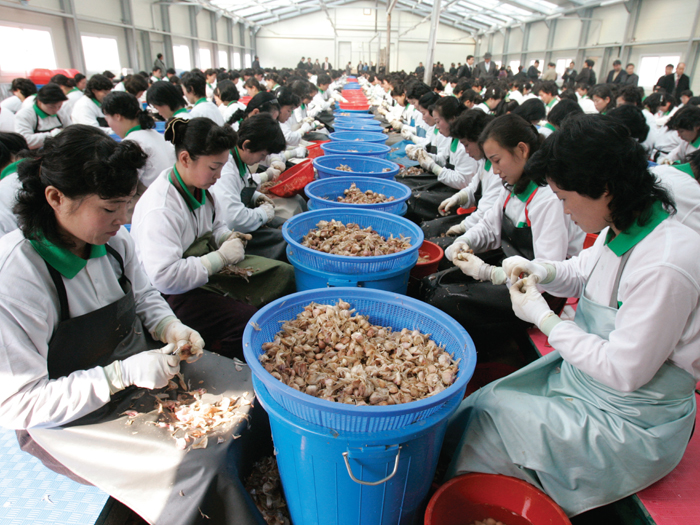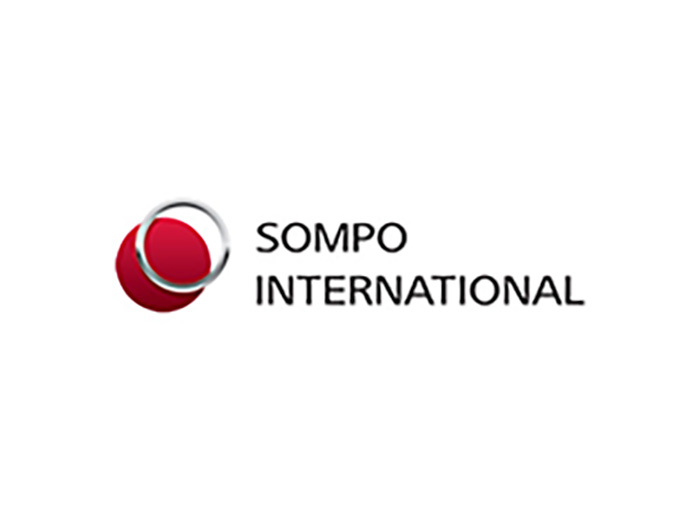Agriculture
Fixing the Food Chain

Earlier this year, the U.S. Department of Justice indicted four former officials of the Peanut Corp. of America (PCA) and accused them of knowingly selling Salmonella-contaminated peanut products that killed nine people and sickened more than 700 in 2009.
It took about a year and a half to track down the 1,800 tainted products, sold under more than 250 brands and manufactured by hundreds of PCA’s customers ranging from small, family-owned businesses to global, multibillion-dollar food companies.
Most of the time, the distribution of contaminated fresh and processed foods is not deliberate, but the ripple effect, nonetheless, is huge — and hugely expensive.
The cost of foodborne illnesses in the United States is $152 billion a year, according to research by Robert L. Scharff for the Produce Safety Project at Georgetown University.
That figure includes medical costs, quality-of-life losses and costs to insurers that pay medical expenses. It does not include the costs of recalls or damage to reputations and the resulting loss of income.
According to the Centers for Disease Control and Prevention, about 48 million Americans suffer — and 3,000 die — every year from domestically acquired foodborne illnesses. The young and elderly are more vulnerable.
“If you watch the news, you see the news, the sports, the weather and the recalls. I don’t think there is a day that goes by that you don’t see a recall on the news,” said Bernie Steves, managing director in Crisis Management for Aon Risk Solutions.
In fact, Steves said, in the fourth quarter of 2012, there were six recalls every single day, according to the Food & Drug Administration. The number of recalls in Q4 2012 was 33 percent higher than the previous quarter.
Food Safety Laws
Two years after the Food Safety Modernization Act (FSMA) was signed into law, companies are still waiting on many regulations to be finalized that will strengthen food safety processes and procedures.
Most companies have two divergent reactions to the proposed rules, said John T. Hoffman, a senior research fellow at the National Center for Food Protection and Defense at the University of Minnesota.
“They are afraid of the new regulations and of how much they will cost,” he said. “And then they will say, ‘It’s about time they fixed some of these things.’ Both of them are correct. Neither is wrong.”
Reaching consensus on FSMA rules has been a lengthy process, leading two consumer groups to sue the FDA in August 2012 after it failed to meet statutory deadlines. In May, the FDA told a California federal judge that it still needed more time.
In July, the FDA finally issued the last set of its proposed regulations, most of which will impact small- and medium-size organizations. Large companies often institute practices even more stringent than those proposed by the FDA, experts said.
The increasing globalization of the food chain adds to the difficulty.
About 85 percent of seafood and 60 percent of fresh produce now come into the United States from overseas, Steves said. Nearly 45 percent of the imported foods causing outbreaks came from Asia.
Among the FDA’s rules, which have been issued on an interim basis:
* Ensure. Companies must ensure imported foods are subject to the same safety standards as required for foods produced in the United States.
* Trace. Food companies must be able trace back, in close to real time, each element of their food supply chain, as well as trace forward each of their products to customers.
* Recall. Food companies must have recall plans in the event of an outbreak.
* Monitor. Food companies must implement a monitoring system to verify their protective controls are effective.
* Verify. Importers must implement a verification program to ensure their foreign suppliers’ protective controls are effective.
In May, the FDA finalized a regulation that all food and animal food importers must report if any products proposed to be brought into the United States have been blocked by any other country.
The FSMA also gave the FDA the power to close down facilities due to unsafe processes. It did that for the first time in November 2012, when it shuttered Sunland Inc., another peanut processor involved in a Salmonella outbreak.
There were no criminal allegations, but 42 people in 20 states were sickened, and the recall expanded to more than 200 different products and about 40 different manufacturers and retail outlets. The company just resumed operations in May.
It took about three months of reported illnesses before the situation was recognized and product recalls began. That seems to be the timespan needed to take action in many food recalls.
On June 3, Townsend Farms in Oregon issued a recall of frozen berries that had been sold by Costco and other carriers of the Harris Teeter product brand. The first case of hepatitis A caused by those berries was reported on March 16, according to the CDC.
As of June 12, 97 people in eight states had contracted the contagious liver disease, which is more common in countries with unsafe water supplies.
Fresh vs. Processed
Back in the day, said Ian Harrison, a partner at Lockton UK and world practice leader for Product Recall, carriers would price the risk of commodity crops lower than processed foods because of the shorter supply chain.
That is no longer the case, and the difference is not just that fresh produce is now imported globally.
Fresh produce has been linked to the largest number of outbreaks, causing about one-quarter of all foodborne illnesses, according to Scharff’s research, which was published in 2010.
“There are a lot of quality control steps in a ready [to eat] meal,” he said. “Underwriters are doing a lot more segmentation of risk, which, to me, indicates the market is becoming a lot more sophisticated.”
But the longer supply chains for processed foods can turn into a “chain of uncertainty,” Harrison said. “It’s easy to say you know who your suppliers are, but it’s more difficult to show your suppliers and their subcontractors are following your rules and your contractual requirements,” he said.
The FDA’s proposed traceability requirements are already having an impact, he said.
Companies are better auditing their suppliers, and some are considering shortening their supply chains or only using contractors in jurisdictions with more stringent food safety laws. Some are also retooling processes, so that if one plant or source is shut down, the company has options to allow production to continue, he said.
In the European Union, where the horsemeat supply-chain scandal affected products in 14 countries, some retailers are demanding manufacturers only source products from inside the EU, Harrison said. The source of the horsemeat was eventually traced to a Romanian slaughterhouse.
More Capacity
The cost of product recall insurance has seen a “quite significant price drop” over the past five years, as new carriers have entered the market. In London, Harrison said, the number of carriers five years ago was about five. Now, there are 15.
But prices are about to change, Harrison said, as there has been “significant claim activity coming through the market, which will have an impact on the price for the next two or three years.”
He also said he has seen a “significant increase in limits purchased this year,” because some companies felt they were underinsured.
More than three-quarters (78 percent) of larger companies buy some sort of specialty insurance to address this exposure, said Aon’s Steves, using statistics from the Grocery Manufacturers Association.
Unfortunately, he said, coverage purchased by small- and mid-size companies, while trending up, is not yet at that level, and those companies probably need the coverage more.
That’s because they have fewer financial resources, are not as well prepared to respond to an incident and may not have the product range that allows them to absorb the losses while still bringing in some revenue, Steves said.
Policy coverage is triggered by the potential of bodily injury, whether accidental or deliberate. About 80 percent of cases are accidents, said Harrison. The remaining 20 percent involve willful tampering.
Mislabeling, which is the basis for more recalls than any other reason, can also trigger coverage, Steves said, provided the bodily injury component is satisfied. Endorsements are also available for government-requested recalls.
Coverage includes paying for the logistical demands of the recall, including the value of the product that can’t be reused. One of the “most important and least appreciated” aspects of the coverage, Steves said, is crisis consulting coverage to help the company mitigate the long-term impact of the event.
It is impact to the brand that causes the greatest losses.
Policies will cover loss of income for the 12 months following the incident, based on past history and anticipated gross profit margin, as well as the cost of “rehabilitation” of the brand, such as advertising or couponing.
Recently, policies have been expanded to third-party recall liability coverage, such as for a manufacturer or packer who does private label work.
“Insurance is a great financial safety net, but it needs to be coupled with pre-incident planning and the ability to respond to the crisis,’ Steves said.










